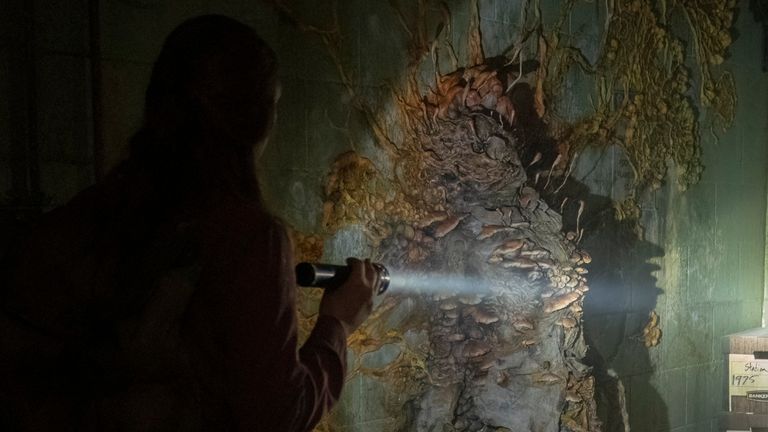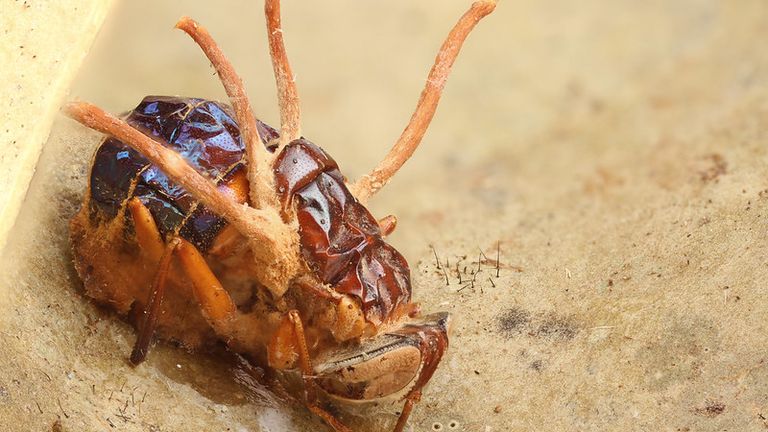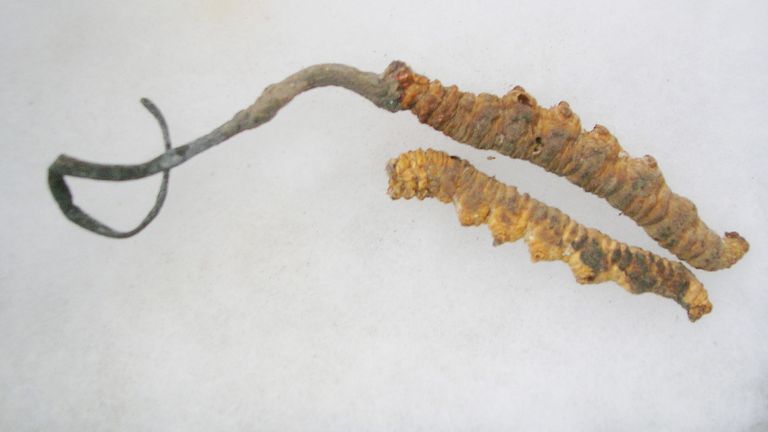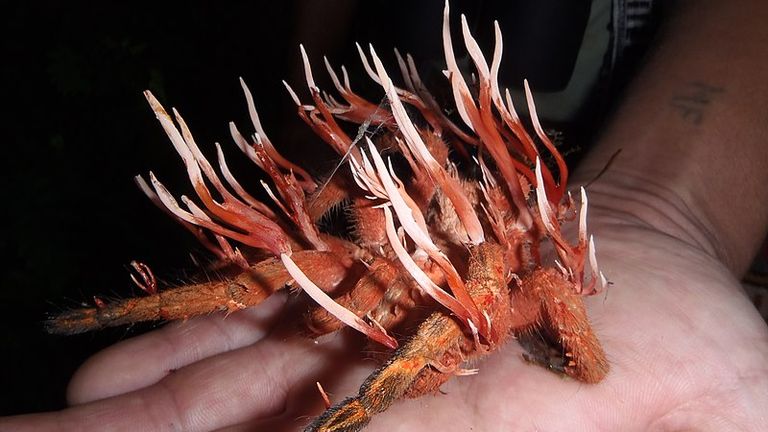Could the next public health crisis be caused by fungi?
The threat of this emergency was raised at the outset of the hit 1960s TV show “The Last of Us,” which opened with a bleak lecture from an epidemiologist about the dangers of fungi.
“If the world is even slightly warmer, there is reason for evolution,” warns the prescient John Hanna, referring to their potential to infect and overwhelm a person’s mind.
“Candida, ergot, cordyceps, aspergillus: any one of them has the potential to burrow into our brains and take over us, not by millions, but by billions.”
The show took that idea and ran with it, jumping forward 40 years to a massive outbreak of cordyceps leading to a devastating pandemic, turning people into bloodthirsty abominations.
The extreme result of taking a lot of artistic license – but is it completely devoid of science?
Do fungi really threaten humans?
“Fungi are already present in the human brain globally,” says Professor Elaine Bignell, a world leader in the study of human fungal pathogens.
“Many fungal species are quite prominent pathogens, killing hundreds of thousands of people every year — the public just doesn’t realize it.”
Viewers of “The Last of Us” may have noticed that some of the dangers identified by the fictional epidemiologist last year appeared in the List of Fungal Threats to Health by the World Health Organization (WHO).
The one considered most at risk is Aspergillus fumigatus, a common mold found widely in homes and outdoor environments that can cause “chronic and acute lung disease” and can be fatal.
Candida species, which cause common infections like thrush and ringworm, are also a leading cause of bloodstream infections in intensive care patients.
Cryptococcus neoformans — which infects the lungs and brain and causes pneumonia and meningitis in immunosuppressed patients — was also on the list. It kills more than 100,000 people every year in sub-Saharan Africa.
“One thing that lethal fungi have in common is their ability to grow at human body temperature, which is unusual for fungi,” Professor Bignell told Sky News.
“Most fungi in the environment are accustomed to growing in milder conditions, which puts considerable stress on any microbe to counteract the body’s immune response and cope with the heat.”
What about Cordyceps?
Cordyceps isn’t on the threat list — but it’s definitely real.
A parasitic fungus infects and controls the minds of insects, just as it did to humans in The Last of Us.
“There are about 600 species,” said Dr. Mark Ramsdale, Professor of Molecular Microbiology at the MRC Center for Medical Mycology.
“They’re primarily insect pathogens. What they manipulate and change their behavior is their insect host. So from that perspective, there’s some basis there.”
The fungus, found in tropical forests, infiltrates insects with spores that are released to allow the fungus to reproduce and protect itself.
The fungus then guides its host to wetter places to help it grow, before feeding on the debris and launching new spores from its corpse.
For humans, Cordyceps is used in healing and healing—especially in Chinese herbal medicine.
“Humans have a long-standing relationship with this particular group,” Dr Ramsdale told Sky News.
“There’s no evidence that they cause disease in humans. But, in their relation to insects, they do manipulate their hosts—a capability that several fungi have evolved over time.”
More like this:
The real inspiration behind the killer robot M3GAN
Could the climate change the picture?
Another aspect of The Last of Us’ ominous presentation shared by the landmark World Health Organization report is the impact of climate change on the nature of fungi and our relationship to them.
Professor Bignell said global warming would have “profound” effects on all microbes on our planet.
There are approximately 150,000 identified species of fungi in the world, far fewer than the millions estimated to exist, and very few are able to cope with the 37-degree Celsius temperature and other stresses the body imposes.
But some can, and many more can—either those yet to be discovered, or adaptations to survive on a warming planet.
read more:
Fungus unknown to science discovered in Scotland
“It changes the selection pressure on those large, diverse life forms,” Dr. Ramsdale said.
“Perhaps some people could switch from one lifestyle to another and become disease-causing in a way that we hadn’t thought of before.”
So the show’s pandemic might be far from the truth, but it’s not entirely without merit.
“What has really changed the most from the current status quo is the scale of the infection and the rate of infection that happened in The Last of Us,” Professor Bignell said.
“There are some fungi that can be passed from one person to another—we’re exposed to them all the time in the environment—but it takes very significant mutations to cause the kind of extinction event they exaggerate”
So… no reason to call the police?
You can rest easy knowing that tomorrow morning there won’t be fungus in your cereal turning you into a zombie.
But researchers say the coronavirus is proof that we can’t rest on our laurels when it comes to public health threats and the nature of their potentially sudden arrival.
Based on the reaction to the opening episode of The Last of Us, it didn’t take long to see the similarities.
Since fungal infection in humans is a relatively modern phenomenon, with few examples until the 1980s, and there were no research programs for an antifungal vaccine, there is certainly much more work to be done.
“We have to be prepared,” Professor Bignell said.
“We have to have a good understanding of how different fungi cause disease in humans, how our immune system responds to these microbes, and a good medicine cabinet with antifungal drugs that we know work.”
In the meantime, if you happen to see someone covered in mushrooms eating and drinking, it’s best to steer clear.
The Last of Us airs every Monday on Sky Atlantic, available on demand.






